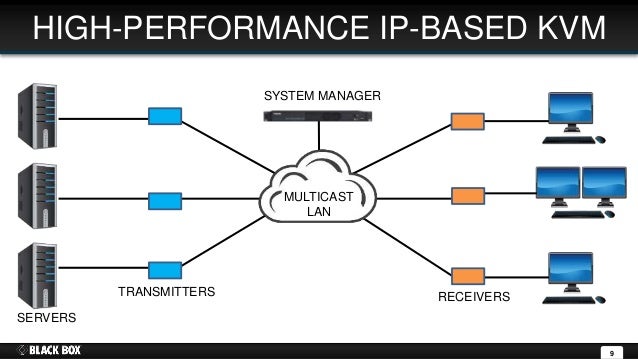
The sudden challenges created by the ongoing COVID-19 are captured effectively to exhibit the long term growth projections in the MRFR report on KVM Market Size. The growth sectors of the KVM Market Size are identified with precision for a better growth perspective.
As the world becomes increasingly connected and digitized, the need for data centers and data transmission networks has emerged as an important way of managing and storing data. The exponential amount of data, hyper-convergence, and continuous developments in IT infrastructure has made data centers a critical solution across industries. Companies around the globe are expected to invest more in the construction of data centers in the coming years. The ownership, renovation, and construction of new data centers are on the rise in developing as well as developed economies across the globe. For instance, in the US (a developed economy) the market for data center construction has flourished due to significant growth in data consumption and production, this trend holds true for developing countries like India. Due to a radical shift in data production and consumption in India, the need for data centers has exponentially increased. In the year 2015, the country witnessed the launch of Digital India, a government initiative for digitization and connecting rural parts of the country to the Internet, which led to the generation and consumption of huge volumes of data, which consequently led to the need for data centers. Similarly, in Africa, due to the growing number of enterprises and the increasing inclination to colocation services, the market for data center construction is growing.
In the year 2018, big tech companies announced the establishment of several data centers. For instance, Facebook Inc. announced that it is planning to open four new data centers at its cloud campus in Papillion, Nebraska. Alibaba opened two new data centers in the UK to strengthen its cloud footprint in Europe. UpCloud, launched its new data center US-SJO1, in San Jose, California, US. Digital Realty (a provider of colocation and interconnection solution) announced the opening of KIX11 data center at Osaka connected campus, Japan. Due to increasing data center construction and renovation activities, the need for KVM is increasing, which is expected to boost the overall market. The KVM switches efficiently manage numerous local and remote servers from a central location. Also, KVM switches and associated accessories are designed for use in multiple applications from small data facilities and mid-size server rooms, to large data centers; this rate of adoption has made the data centers ubiquitous. Also, manufactures of KVM invest in developing more comprehensive and cost-effective KVMs. These manufacturers offer varied types of KVM switches including USB, DVI, and HDMI among others. Therefore, end-user are given a number of options to choose from, based on their requirement and need. For instance, a number of data center providers opt for KVMs that provide support for audio, or KVMs that offer security and authentication. Based on application requirement, the end-user selects the KVM manufacturers. KVMs not only help in controlling the data center operation from one single location but also ensure cost-effective operation, which is encouraging their adoption among data center providers.
The global KVM market is expected to expand at ~2.7% CAGR to reach a market value of USD 1,155.8 million in 2025.
Regional Analysis
Geographic analysis of the KVM market covers North America, Europe, Asia-Pacific, the Middle East & Africa, and South America. North America led the global KVM market in 2018, whereas the market in Asia-Pacific is expected to register the highest growth rate during the forecast period.
North America accounts for the largest market share in the global KVM market owing to the highest adoption of KVM systems from various companies in the US, Canada, and Mexico. The presence of established key players in the KVM market such as Black Box Corporation, SmartAVI, Inc., Raritan Inc., Raloy Inc., Vertiv, Icron, Gefen, and Network Technologies Inc. in this region has led the market to grow significantly. IT and telecommunication and broadcasting sectors are expected to generate significant revenue for the market in this region, while aerospace and defense sector is expected to register the fastest growth during the review period. Among the North American countries, the US market is the key contributor to the KVM followed by Canada and Mexico.
In Europe, increasing demand from the IT & telecom, broadcasting and government industries is expected to bring significant growth prospects for the region. Also, the rising investments and digital transformation of control centers and security rooms from the government, aerospace and defense, and aviation sectors is driving the growth of the market in this region. Additionally, the presence of various IT companies and its data centers in developed countries such as France, the UK, Germany, and Italy are expected to bring tremendous growth opportunities for the KVM systems market in the years to come.
The growth in the APAC region is driven by the increasing adoption of KVM systems for control room applications, control centers and video editing, financial, banking, trading desks, government and military agencies, production lines, and others. Also, the growing number of data centers across the region and the presence of key market players in countries such as China, Japan, and Taiwan are expected to fuel the growth of KVM systems during the forecast period. The APAC region is expected to grow at the highest CAGR of 4.9% during the forecast period.
More Information@
About Market Research Future:
At Market Research Future (MRFR), we enable our customers to unravel the complexity of various industries through our Cooked Research Reports (CRR), Half-Cooked Research Reports (HCRR), Raw Research Reports (3R), Continuous-Feed Research (CFR), and Market Research and Consulting Services.
Contact:
Market Research Future
+1 646 845 9312
Email: sales@marketresearchfuture.com
Comments
Post a Comment